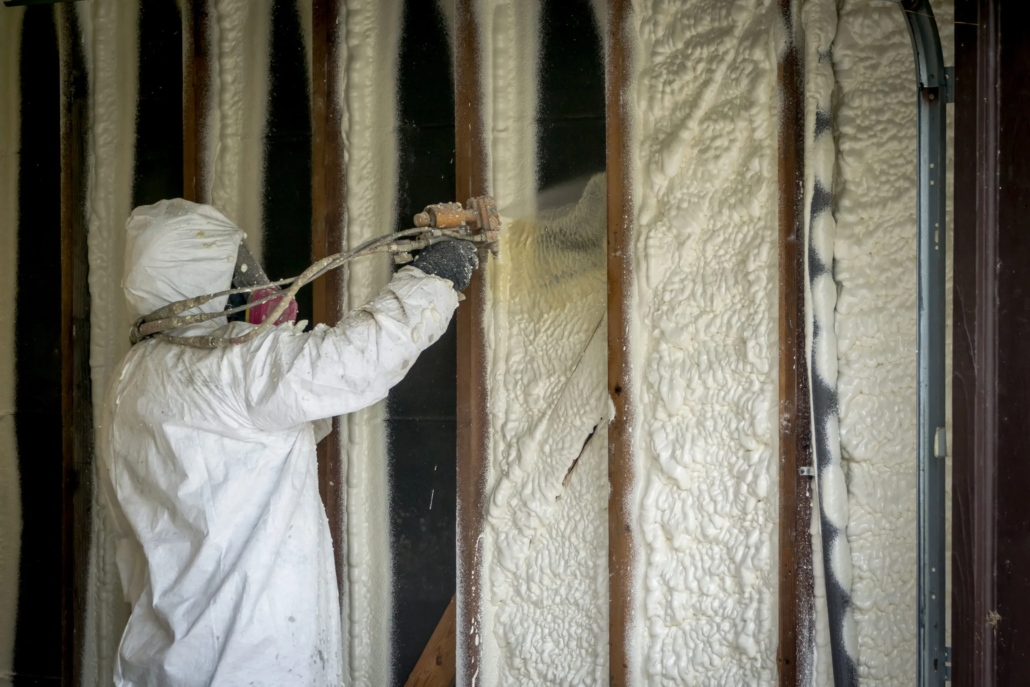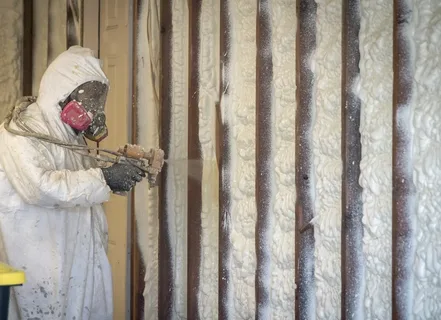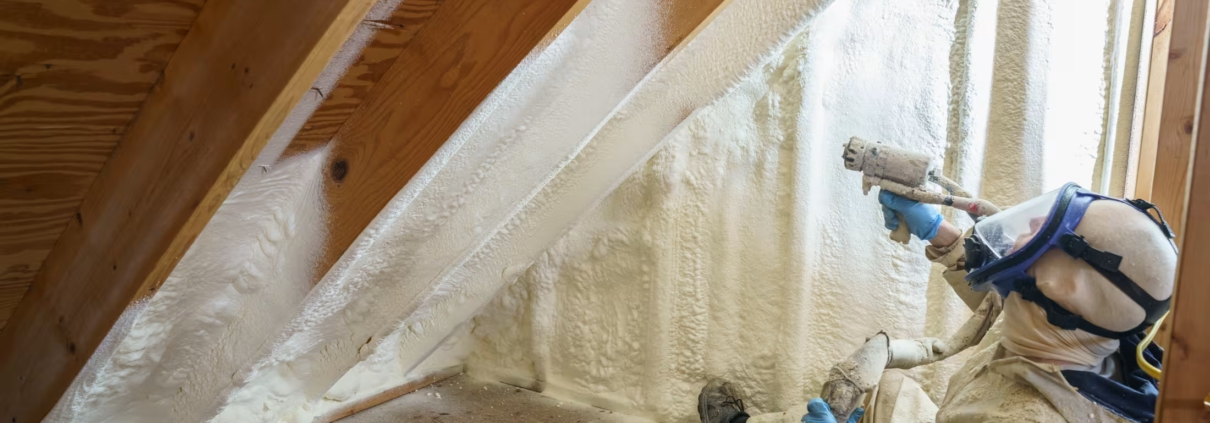Top Advantages of Using Commercial Spray Foam in Industrial Spaces
If your industrial space is sweating in summer, freezing in winter, and guzzling energy like it’s on a dare, it’s probably not just the machinery—your insulation is underperforming. A lot of facilities are still using outdated insulation systems that were barely efficient twenty years ago. Now they’re costing thousands in wasted energy and maintenance.
That’s why commercial spray foam has stepped up in a big way. In 2025, facility managers and building owners are ditching the old layers of fiberglass and loose-fill for something that actually seals, insulates, and holds up in tough conditions. Here’s why this shift isn’t a trend—it’s a practical move driven by performance, compliance, and cost control.
Why Commercial Spray Foam Solves Industrial Energy Loss at the Source
Most insulation materials don’t address the real issue in large facilities—air movement. If warm or cool air is leaking in and out around every structural joint, your HVAC system is locked in a losing battle.
Air Sealing That Prevents Hidden Losses
- Creates a continuous air barrier that stops hidden leaks
- Seals around irregular shapes, joints, and penetrations
- Especially effective in metal buildings and warehouse facilities with frequent seams
Thermal Performance Under Harsh Conditions
- Maintains thermal resistance (R-value) in extreme heat or cold
- Resists sagging or breakdown over time
- Closed-cell spray foam reinforces structural strength in high-stress environments
Fun Fact: Some industrial facilities using closed-cell spray foam report HVAC runtime reductions of up to 40% after full coverage installation.
Moisture and Mold Control in Commercial Interiors
Humidity isn’t just uncomfortable—it wrecks building materials, compromises safety, and invites mold growth. Spray foam handles moisture differently than traditional insulation.
Closed-Cell Foam Blocks Moisture Intrusion
The dense structure of closed-cell spray foam stops water vapor from migrating through walls or ceilings. That makes it ideal for facilities storing sensitive materials or using moisture-prone processes.
Mold Resistance Is Baked In
Spray foam doesn’t provide food for mold or mildew. And because it seals off air leaks, it reduces condensation points where mold usually grows.
Fun Fact: In a side-by-side test, buildings with spray foam insulation had 90% fewer reported mold issues over a five-year span compared to similar buildings using fiberglass.
Temperature Control = Operational Efficiency
Temperature swings inside a facility don’t just make work environments uncomfortable—they affect machinery, product quality, and storage viability. Consistency matters.
Improved Climate Control in High-Volume Spaces
Large spaces like manufacturing floors or fulfillment centers benefit from spray foam because it minimizes heat transfer and holds internal temperatures longer. This makes HVAC operations more predictable and efficient.
Insulation That Performs on Ceilings and Roof Decks
Ceiling and roof insulation is a major weak point in industrial buildings. Spray foam’s ability to cling to curved or sloped surfaces without sagging makes it ideal for overhead applications.
| Area | Spray Foam Effectiveness | Traditional Insulation Issues |
|---|---|---|
| Ceilings | Maintains full contact, no sagging | Gaps due to gravity or surface shape |
| Roof Decks | Adds rigidity and insulation | Prone to air leaks and moisture intrusion |
| Wall Cavities | Fills entire voids tightly | Leaves unsealed gaps and air paths |
| Around Ducts/Penetrations | Self-sealing application | Often cut to fit, poorly sealed |

Fire Ratings and Code Compliance Made Simpler
Spray foam has evolved. Today’s commercial products meet the fire resistance, flame spread, and smoke development ratings required for industrial buildings.
Tested and Rated for Industrial Use
Foam systems for commercial spaces now come with Class A fire ratings and approved thermal barriers. That makes them easier to specify for compliance inspections.
Simplifies the Insulation + Air Barrier Requirement
Building codes increasingly require both insulation and air sealing. Spray foam checks both boxes in one application, reducing labor time and system complexity.
Long-Term Cost Savings for Building Operators
Spray foam isn’t just about energy savings—although those add up fast. It cuts down on building wear, HVAC maintenance, and water damage risk over time.
Fewer System Failures Linked to Air and Moisture Problems
By reducing humidity, pressure swings, and temperature fluctuations, spray foam protects everything from wiring to equipment to structural framing.
Durability Means Less Frequent Replacement
Where other insulation needs reinstallation after 10–15 years, spray foam maintains its performance for decades without settling or degrading.
Common Question: Is Spray Foam a Good Fit for Large-Scale Buildings?
Yes, and it often outperforms traditional systems by simplifying the building envelope design. For industrial facilities that run 24/7, reducing HVAC load, improving airtightness, and avoiding insulation failures is worth the investment—and the ROI shows up fast in energy audits and utility bills.
Conclusion
Industrial buildings face unique insulation challenges—huge spaces, high ceilings, temperature-sensitive processes, and demanding energy loads. In 2025, commercial spray foam stands out because it doesn’t try to patch those problems. It solves them from the inside out.
Whether it’s about stopping air leaks, managing moisture, or finally taking control of utility costs, spray foam delivers measurable, long-term improvements. It lasts longer, performs better, and simplifies code compliance. That’s why more facility owners are turning to a trusted spray foam insulation company—because it works where other materials don’t.

FAQs
Can spray foam insulation be used on metal buildings?
Yes. Spray foam adheres well to metal, making it ideal for warehouses, industrial shops, and distribution centers. It fills seams and stops condensation on walls and ceilings.
Is closed-cell foam better for industrial use than open-cell?
Typically, yes. Closed-cell spray foam offers higher R-value per inch, greater moisture resistance, and structural support—important benefits in industrial environments.
Will spray foam improve HVAC performance in large buildings?
Absolutely. By minimizing heat gain and air loss, spray foam reduces HVAC cycling. That improves efficiency and can extend the life of climate control systems.
Is commercial spray foam fire safe for industrial spaces?
Yes, when installed with approved thermal barriers and rated materials. Many products now meet or exceed commercial fire safety standards required for large buildings.
Does spray foam affect indoor air quality in workspaces?
Once cured, spray foam is inert and doesn’t emit VOCs. It can actually improve air quality by reducing external air infiltration and limiting dust and allergen intrusion.
Reviewer:Maria Lopez reviewed the article and brought 12 years of insulation industry experience to improve the guidance. Practical tips were added, and the content was made clearer and more useful for contractors working in the field every day.


Leave a Reply
Want to join the discussion?Feel free to contribute!